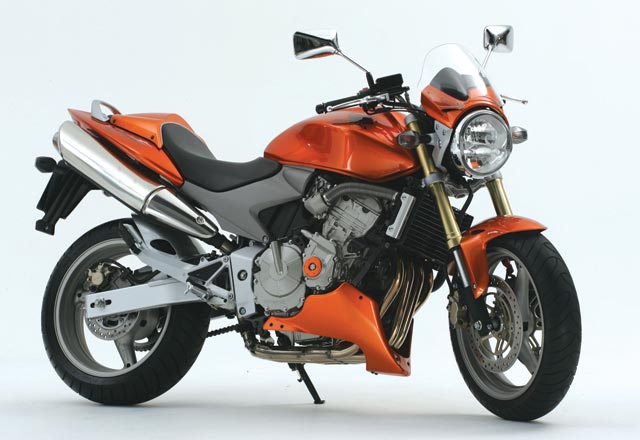
Lighter, sleeker and optimised for sporty riding - the 2008 Ducati Monster 696



Ducati released the first official pics of the 2008 Monster 696 in November last year. The all-new Monster wasn’t as radical as we’d been hoping for, but we still liked the bike anyway. The motorcycle press worldwide was recently given a chance to ride the 696, and more details on the bike are now available.
Designed for the city and for twisty mountain roads, the Monster 696 features improved ergonomics, a low seat height (770mm), and fully digital instrumentation, which among other things, also has a built-in lap-timer and is compatible with Ducati’s DDA (Ducati Data Analyser) system.
The Monster 696’s air-cooled L-twin engine only makes a modest 80bhp and 69Nm of torque, but given that the bike only weighs 152 kilos dry, performance should be at least reasonably sprightly. Ducati also say the Monster 696’s steel-tube trellis frame is stiffer than ever before, and along with the new aluminium swingarm, the whole package has been optimized for high-speed stability.


Looks all right we suppose, though we do wish Ducati had been a bit braver with the 696's styling...
The suspension comprises of a 43mm Showa USD front fork, and a preload-adjustable Sachs monoshock. The bike rides on 17-inch wheels, shod with 120/60 (front) and 160/60 (rear) ZR-rated rubber. Other bits include
Ducati’s APTC slipper clutch, six-speed gearbox, twin 320mm brake discs (Brembo) with radial-mount four-piston calipers at the front, and 245mm rear brake disc.
MCN’s Adam Child, who recently rode the 696 in Barcelona, says, ‘On first impressions it kind of feels like the old Monster – there is a lot of character and feel of the old machine – like the position of the tank and the trellis frame. But the new bike is way, way better. The Monster now handles a lot better than the old one.
The old Monster had a tendency to understeer, but the 696 handles beautifully with really sharp steering.’
‘Brembo brakes and no weight amount to great stopping power, and it comes with a slipper clutch as standard, so there is no worry for new riders about the engine braking from the v-twin. But the thing that really impressed about the monster is just how good the gearbox and fuelling is,’ says Child.
For those who want a bit more style and exclusivity,
Ducati have also released the Monster 696+ which is a specially customized variant of the regular Monster. The 696+ is fitted with a small front fairing and a removable rear seat cowl. But that’s not all – a very wide range of accessories is being made available for the 696. The list of optional fancy bits includes titanium silencers (supplied with a new ECU and air-filter), carbon racing exhaust system, a special touring seat made of high-density foam, LED turn indicators, shorter tail guard, and many carbonfibre bits and pieces.














 Suzuki SkyDrive Modifies
Suzuki SkyDrive Modifies





 The latest Honda motorcycle in the Thai domestic line up to get the PGM-FI (fuel Injection) upgrade is the Honda Air Blade. At first glance, the new and stylish Honda Air Blade i looks to be no much different than his none fuel injection brother in the range. This doesn't change when you site on the bike as the lightweight and compact dimensions give little indication of the true engine capability.
The latest Honda motorcycle in the Thai domestic line up to get the PGM-FI (fuel Injection) upgrade is the Honda Air Blade. At first glance, the new and stylish Honda Air Blade i looks to be no much different than his none fuel injection brother in the range. This doesn't change when you site on the bike as the lightweight and compact dimensions give little indication of the true engine capability. With its well designed and proven frame design, well-controlled suspension and perfect balanced rubber, the chassis is tight and accurate through bends. With Honda's Combi-brake technology, the stopping department not only matches this fine handling, it surpasses it.
With its well designed and proven frame design, well-controlled suspension and perfect balanced rubber, the chassis is tight and accurate through bends. With Honda's Combi-brake technology, the stopping department not only matches this fine handling, it surpasses it.

